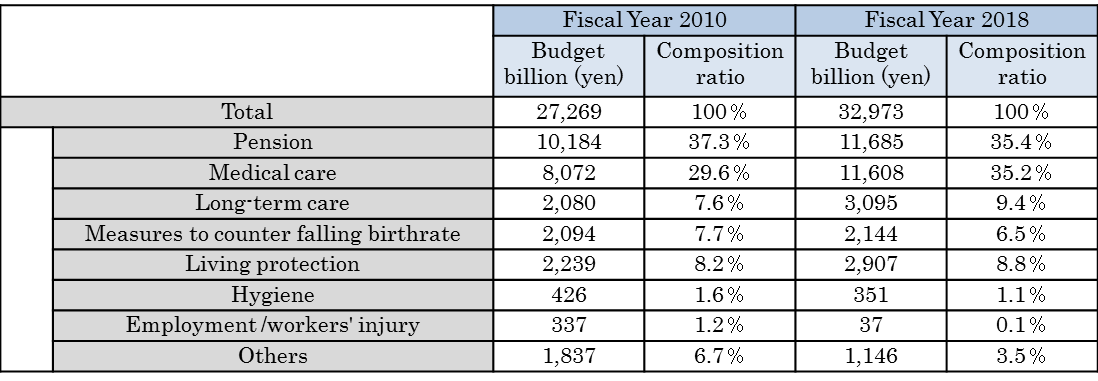Column Finance and the Social Security System 2018.02.20
【Aging, safety net and fiscal crisis in Japan】No.35: Social security budget of the national government
The social security benefit expenditure in Japan increased from JPY78.3 trillion in FY2000 to JPY112.1 trillion in 2014 in an era characterized by declining birthrate and aging population. The Ministry of Finance has announced the 2018 budget, which will be part of this social security financial resource.
Comparing this budget with that in 2010, the following points are noteworthy:
① Health care (medical care and long-term care) is now bigger than pension.
② Outlay on living protection is increasing, reflecting the fact that the number of people receiving protection benefits has increased as stated in Column No.13.
③ Although the Abe administration has been emphasizing on measures for the declining birthrate, the budget remains unchanged.
④ Employment countermeasure expenses decreased sharply, reflecting the decline in the unemployment rate.
In any case, one needs to be aware that these budgets are supported by issuing deficit bonds.

(Source)Ministry of Finance
